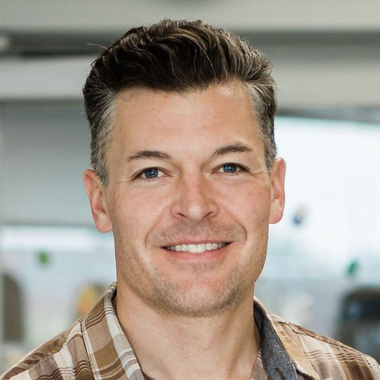Decoding the second brain
NIH support will help researchers uncover how gut cell conversations could unlock new treatments for digestive disorders
Trust your gut is more than an expression. The gut’s ability to influence our wellbeing is rooted in the enteric nervous system. This complex network of neurons and glial cells that lines the gut is often called the “second brain.”
MSU researcher Brian Gulbransen has been awarded a grant from the National Institutes of Health, or NIH, to investigate how the two main cell types that make up the enteric nervous system, glia and neurons, optimize gut functions in health and how a breakdown in glia-neuron communication contributes to gut dysfunction in disease. This research could help identify new approaches to treating common digestive disorders, including irritable bowel syndrome, or IBS, and inflammatory bowel disease, or IBD.
“Glial cells surround gut neurons and listen to how the neurons communicate,” said Gulbransen, a MSU Research Foundation Professor in the College of Natural Science’s Department of Physiology. “We are curious about how the glial cells ‘talk’ back to their neuron neighbors, and how this affects the circuitry that controls gut functions.”

Gulbransen’s lab focuses on the gut, referring to everything from the mouth on down. The enteric nervous system, or ENS, contains the same building blocks as the central nervous system—neurons and glial cells—but serve different functions in the body. The central nervous system is the body’s control center that can influence the ENS, but the ENS is focused on the gut and can operate independently of the brain.
The five-year grant will support Gulbransen and his team as they study how glial cells influence gut neurons in health and disease. In particular, they will examine how glia affect different neuron subtypes, the signals that are responsible and how changes in glial–neuron interactions contribute to persistent gut issues following inflammation.
According to Gulbransen, gastrointestinal infections or inflammatory bowel disease instigates dysfunction in the gut cell conversation. While the body can clear the infection, the resulting inflammation can leave an imprint on how the glia and neurons interact.
“We found glial cells become hyperactive after experiencing inflammation,” Gulbransen said. “Hyperactive glia wind up the whole system to produce a state of hyperactivity throughout the ENS.”
The team will study glial cell hyperactivity with the goal of finding ways to reverse the situation and return the gut to a normal state of activity.
The work will involve cellular imaging experiments, models of irritable bowel syndrome, or IBS, and chemogenetics—a research technique that uses genetically modified receptors to control cellular activity. Using these different techniques, the team will examine how glial cells optimize how the ENS controls gut movements and why this system becomes dysfunctional in disease.
Gulbransen has focused his career on understanding the how glial cells work within the ENS, especially in the formation of IBS, a group of symptoms that include abdominal pain and changes in bowel movements, and IBD, characterized by changes in bowel movements, stomach pain, fatigue, nausea and weight loss. Both IBS and IBD affect up to 40% of adults in the United States.
The results of this study could help researchers identify targets for future therapies, an active area of interest by pharmaceutical companies. These targets could be the focus for drug development to treat or eliminate the conditions that result in inflammation of the GI tract by counteracting the glia’s sensitizing efforts.
“MSU has one of the best gut research groups in the world,” he said. “The recognition and support from the NIH shows the value of this work that could bring relief to millions of people.”
- Categories: